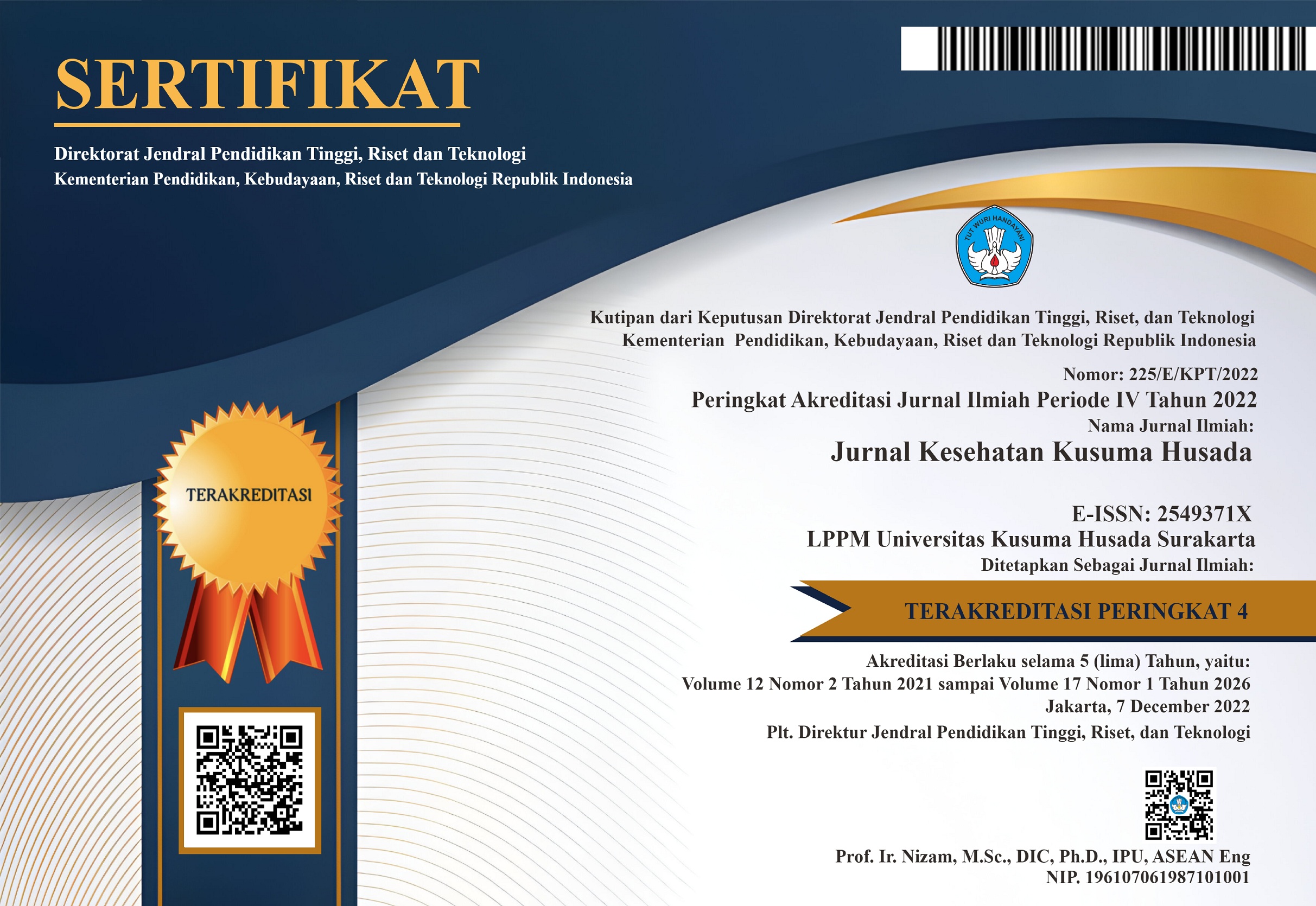POTENSI KEANEKARAGAMAN UMUR NYAMUK Culex quinquefasciatus SEBAGAI VEKTOR FILARIASIS DI DAERAH ENDEMIS KOTA PEKALONGAN
DOI:
https://doi.org/10.34035/jk.v15i1.1213Keywords:
Filariasis, dilatasi ovarium, umur, Ovarioles dilatation, AgesAbstract
Filariasis adalah penyakit menular menahun yang disebabkan oleh cacing filaria dan ditularkan melalui nyamuk (vector borne disiese). WHO menetapkan kesepakatan global sebagai upaya untuk mengeliminasi filariasis pada tahun 2020 melalui Global Programme to Eliminate Lymphatic Filariasis (GPELF), tetapi sampai tahun 2023 di Kelurahan Jenggot Kota Pekalongan masih menjadi daerah endemis filariasis dengan ditemukannya kasus baru. Nyamuk berpotensi sebagai vektor filriasis apabila memenuhi persyaratan populasi spesies yang bersangkutan secara umum mempunyai umur cukup untuk menjadi vektor masa inkubasi eksternal dari filaria. Tujuan penelitian ini adalah untuk mengetahui umur nyamuk Culex quinquefasciatus sebagai vektor filariasis di daerah Endemis Kelurahan Jenggot Kota Pekalongan. Cx. quinquefasciatus dipilih karena menjadi spesies terbanyak di daerah penelitian dan berpotensi menjadi vektor filariasis. Desain penelitian ini adalah deskriptif kuantitatif dengan menggunakan 200 sampel nyamuk betina dengan metode dilatasi ovarium. yaitu dengan membedah ovarium nyamuk untuk memeriksa parousitasnya. Selanjutnya, jumlah dilatasi dikalikan dengan siklus gonotropik nyamuk, sehingga diperoleh spesies vektor yang berpotensi sebagai penular penyakit bila dikaitkan dengan umur siklus hidup ekstrinsik parasit. Hasil penelitian didapatkan rata – rata umur nyamuk Cx. quinquefasciatus adalah 17.2 hari sedangkan masa inkubasi ekstrinsik filaria dari L1 sampai L3 adalah 10-13 hari. Dari hasil penelitian dapat disimpulkan bahwa nyamuk Cx. quinquefasciatus memiliki umur yang berpotensi menjadi vektor filariasis.
Filariasis is a chronic infectious disease caused by filarial worms and transmitted through mosquitoes (vector borne disease). WHO established a global agreement as an effort to eliminate filariasis by 2020 through the Global Program to Eliminate Lymphatic Filariasis (GPELF), but until 2023 Jenggot Village, Pekalongan City, is still an endemic area for filariasis with the discovery of new cases. Mosquitoes have the potential to be vectors of filariasis if they meet the requirements for the population of the species concerned to generally have sufficient age to become a vector for the external incubation period of filariasis. The aim of this research is to determine the age of the Culex quinquefasciatus mosquito as a filariasis vector in the endemic area of Jenggot Village, Pekalongan City. Cx. quinquefasciatus was chosen because it is the most abundant species in the study area and has the potential to be a filariasis vector. The design of this research was descriptive quantitative using 200 samples of female mosquitoes using the ovarian dilatation method. namely by dissecting the mosquito's ovary to check its parousity. Next, the number of dilations is multiplied by the mosquito's gonotrophic cycle, to obtain a vector species that has the potential to transmit disease when related to the age of the parasite's extrinsic life cycle. The research results showed that the average lifespan of Cx mosquitoes. quinquefasciatus is 17.2 days while the incubation period for extrinsic filaria from L1 to L3 is 10-13 days. From the research results it can be concluded that the mosquito Cx. quinquefasciatus has the potential to become a filariasis vector.
References
Downloads
Published
Issue
Section
License
Copyright (c) 2024 Jurnal Kesehatan Kusuma Husada

This work is licensed under a Creative Commons Attribution 4.0 International License.
The copyright of the published articles belongs to Jurnal Kesehatan Kusuma Husada.

This work is licensed under a Creative Commons Attribution 4.0 International License.
















